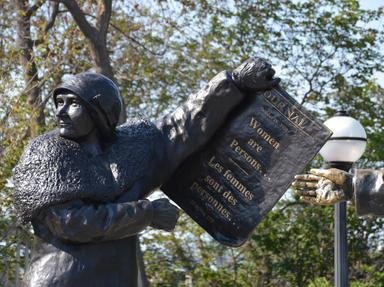Quiz Answer Key and Fun Facts
1. If there's a Second Wave of American feminism that began in the 1960s, there must have been a First Wave. When approximately did that take place?
2. Many court cases gave impetus to the Women's Liberation movement. One particular Supreme Court case struck down a state ban on contraceptives for married couples, as the Justices cited a Constitutional right to privacy. Which case is it?
3. An early group in the Second Wave in the 1960s, Women Strike for Peace (WSP) used their status as middle-class mothers to demonstrate on several key issues while avoiding the label "communist" or "radical". Which of these was NOT among them?
4. One of the most famous incidents of the Second Wave was a protest that garnered extraordinary media coverage. In 1968, women held a protest of the Miss America pageant and the unrealistic expectations for women's beauty. What did they do?
5. As the second wave of feminism gained momentum, student and faculty activism led to the development of Women's Studies. The first such course was at Cornell University in 1969. The first Women's Studies department was at which university?
6. For a brief time there was a generation gap in the women's movement between liberals and radicals. Older women in the movement came from a liberal tradition rooted in the Progressive movement of the early twentieth century and in part from women's labor struggles. How did younger women, particularly students, in the 1960s get involved in the radical branch of the women's movement?
7. Many changes in the law were increasing women's rights, but sometimes they fell short of what was hoped for, and spurred activists on. For instance, the Equal Pay Act of 1963 required equal pay for equal work regardless of sex. Although the Equal Opportunity Commission was supposed to enforce this law, it failed to do so effectively due to lack of funding. What else, besides this, gave impetus to the women's liberation movement?
8. The Equal Rights Amendment (ERA) was intended to guarantee equal rights and equal protection for women (as the Fourteenth did for people of color). It was approved by Congress and endorsed by Richard Nixon in 1972. Congress set a deadline for ratification by 38 states by March 22, 1979. How many states had approved it by then?
9. Another focus of the Second Wave was violence against women, particularly domestic violence and the relatively new legal concept of marital rape. In 1976, which state of the Union enacted the first law forbidding a husband from forcing sex upon his wife?
10. Let's end on a positive note. President Carter proclaimed March 8, 1980 as National Women's History Week. That same year, who co-sponsored the first Joint Congressional Resolution proclaiming a "National Women's History Week 1981", which eventually became a permanent Women's History Month? (Think about the dates.)
Source: Author
gracious1
This quiz was reviewed by FunTrivia editor
bloomsby before going online.
Any errors found in FunTrivia content are routinely corrected through our feedback system.

